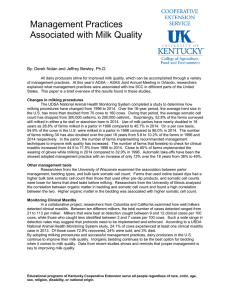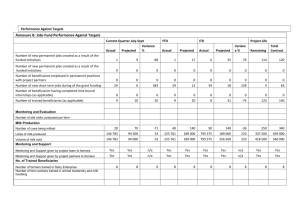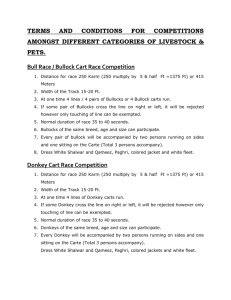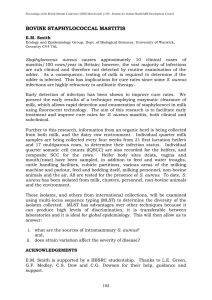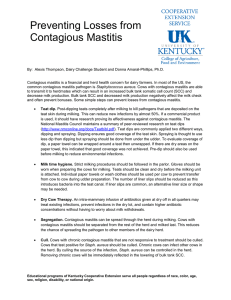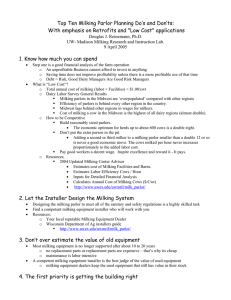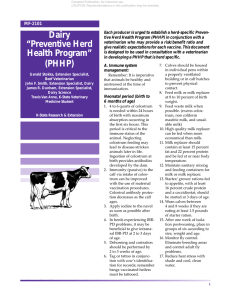Managing and Training Labor Responsible for Milking Dairy Cows
advertisement
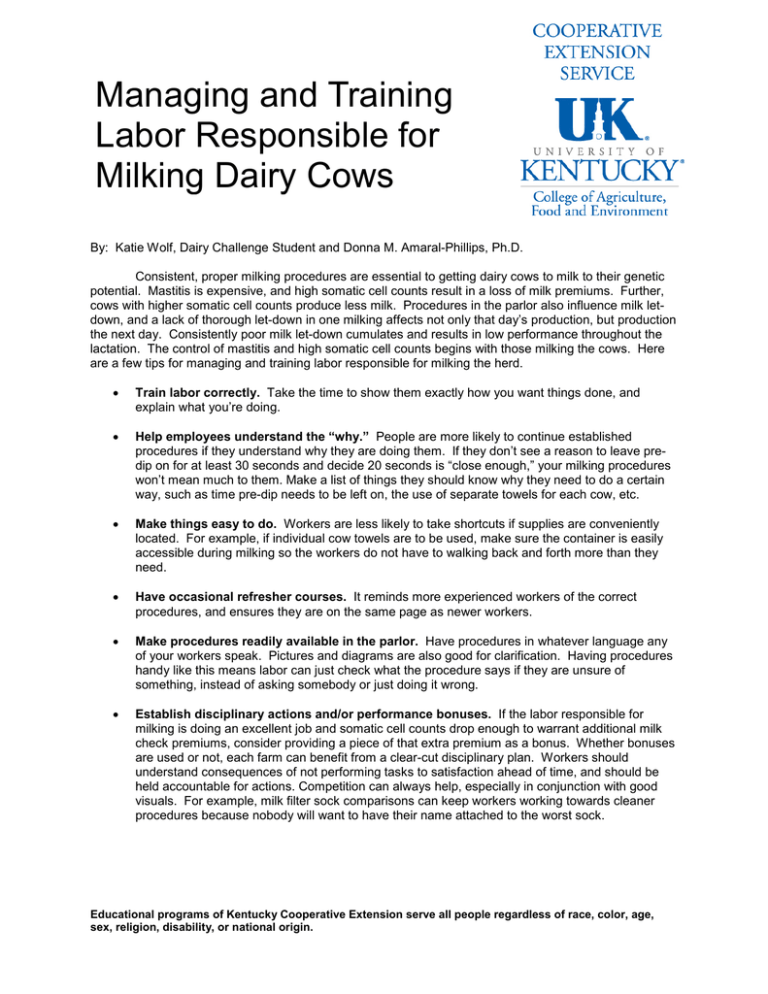
Managing and Training Labor Responsible for Milking Dairy Cows By: Katie Wolf, Dairy Challenge Student and Donna M. Amaral-Phillips, Ph.D. Consistent, proper milking procedures are essential to getting dairy cows to milk to their genetic potential. Mastitis is expensive, and high somatic cell counts result in a loss of milk premiums. Further, cows with higher somatic cell counts produce less milk. Procedures in the parlor also influence milk letdown, and a lack of thorough let-down in one milking affects not only that day’s production, but production the next day. Consistently poor milk let-down cumulates and results in low performance throughout the lactation. The control of mastitis and high somatic cell counts begins with those milking the cows. Here are a few tips for managing and training labor responsible for milking the herd. • Train labor correctly. Take the time to show them exactly how you want things done, and explain what you’re doing. • Help employees understand the “why.” People are more likely to continue established procedures if they understand why they are doing them. If they don’t see a reason to leave predip on for at least 30 seconds and decide 20 seconds is “close enough,” your milking procedures won’t mean much to them. Make a list of things they should know why they need to do a certain way, such as time pre-dip needs to be left on, the use of separate towels for each cow, etc. • Make things easy to do. Workers are less likely to take shortcuts if supplies are conveniently located. For example, if individual cow towels are to be used, make sure the container is easily accessible during milking so the workers do not have to walking back and forth more than they need. • Have occasional refresher courses. It reminds more experienced workers of the correct procedures, and ensures they are on the same page as newer workers. • Make procedures readily available in the parlor. Have procedures in whatever language any of your workers speak. Pictures and diagrams are also good for clarification. Having procedures handy like this means labor can just check what the procedure says if they are unsure of something, instead of asking somebody or just doing it wrong. • Establish disciplinary actions and/or performance bonuses. If the labor responsible for milking is doing an excellent job and somatic cell counts drop enough to warrant additional milk check premiums, consider providing a piece of that extra premium as a bonus. Whether bonuses are used or not, each farm can benefit from a clear-cut disciplinary plan. Workers should understand consequences of not performing tasks to satisfaction ahead of time, and should be held accountable for actions. Competition can always help, especially in conjunction with good visuals. For example, milk filter sock comparisons can keep workers working towards cleaner procedures because nobody will want to have their name attached to the worst sock. Educational programs of Kentucky Cooperative Extension serve all people regardless of race, color, age, sex, religion, disability, or national origin.


